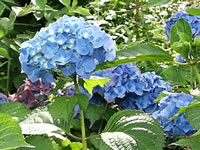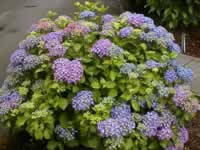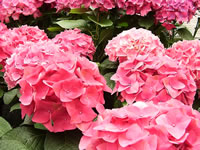How to Grow and Care for Your Bigleaf Hydrangea PlantHydrangea macrophyllaWe moved into our home 7 years ago and inherited a large hydrangea plant. Each year it grows taller and bushier and looks very healthy. (It is now about 5 ft.) The problem is it has never bloomed (well it did get one flower - a bluish one that turned white - about 2 years ago) It is located in a bed by our deck - it gets afternoon sun - sometimes very hot sun and this makes it wilt but it bounces back after a good drink. The soil is acid. We live in Canada in the Kootenays, warm summers, lots of snow in winter. I really want this plant to bloom the blue flowers I can imagine, but it just grows leaves. Any help or suggestions would be appreciated. THANKS! |
||||||
|
||||||
|
Hydrangea macrophylla blooms from buds formed on new growth produced the previous year (old wood), so pruning of this variety should be done immediately after blooming in early summer. Other varieties of Hydrangeas should be pruned in late fall or early spring. The entire Hydrangea plant can be cut back to the ground if it becomes to large, because it will quickly regrow to it's prior size, and begin blooming again. Propagating Hydrangea PlantsHydrangea plants can be propagated by softwood cuttings taken in June.Using a sharp clean knife, strip the lower half of the leaves from a 6-8 inch healthy cutting. Dip about 3/4 inch of the cut end into a rooting hormone such as Roottone® or Hormonex®, and insert the cutting about one inch deep into sterile moist sand, vermiculite or sphagnum moss. Create a mini-greenhouse over the container with poly film over a wire frame and place it in a bright spot (NOT full sun!) until the roots form. After the cutting has rooted it should be planted in a mix of loam and peat moss. Hydrangea cuttings may also root when placed in a glass of clean water. Growing Tips and TriviaHydrangeas are natures own little pH tester...In acid soil (<pH 7.0), the bloom clusters will be blue. You'll get pink flowers if you have alkaline soil (>pH 7.0), and white blooms if your soil has a neutral pH (pH 7.0).
|
||||||
Search The Garden Helper:



